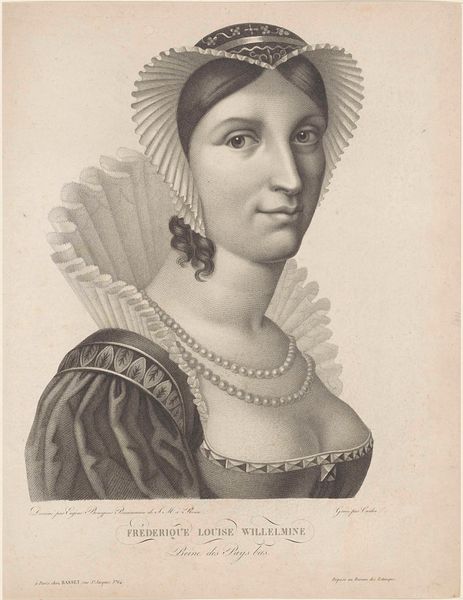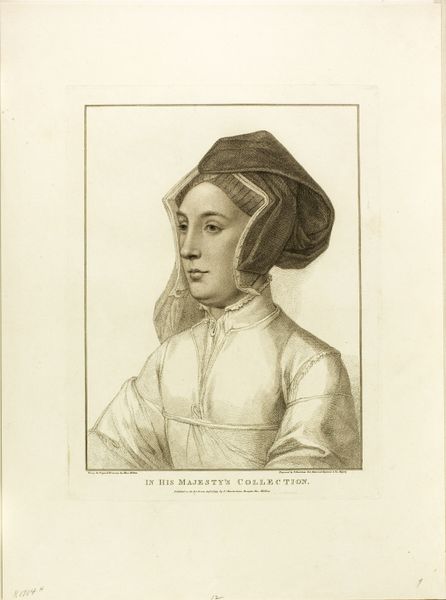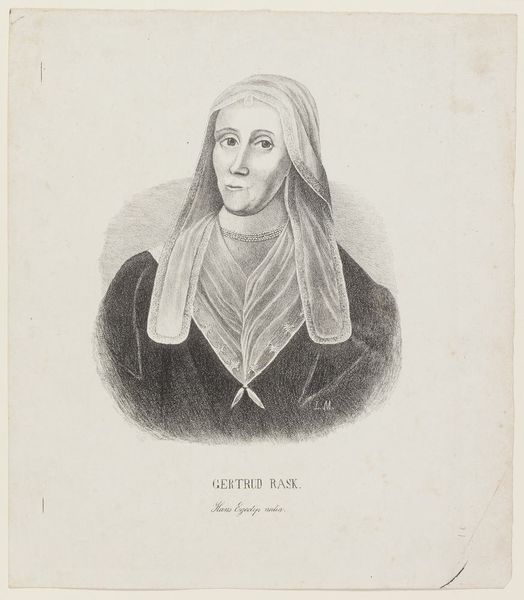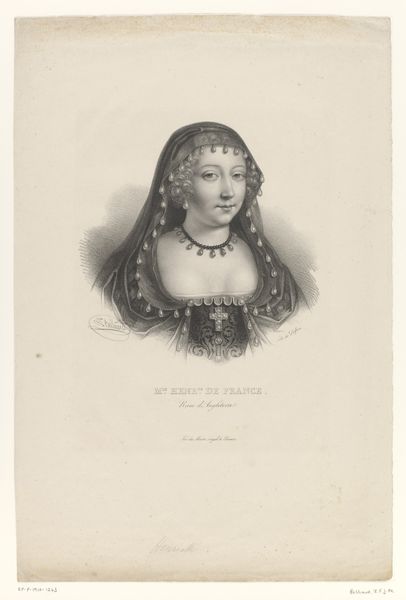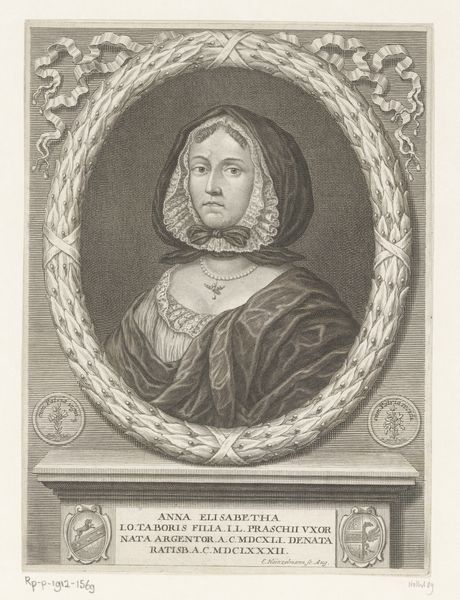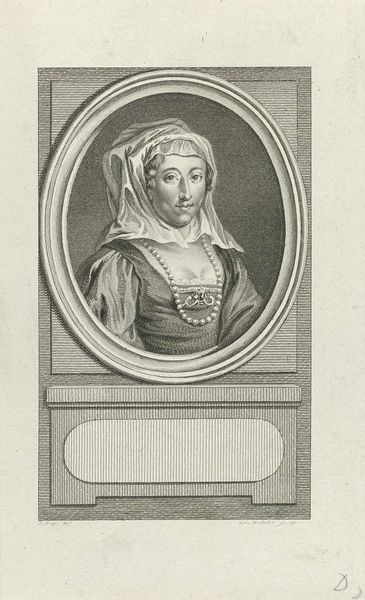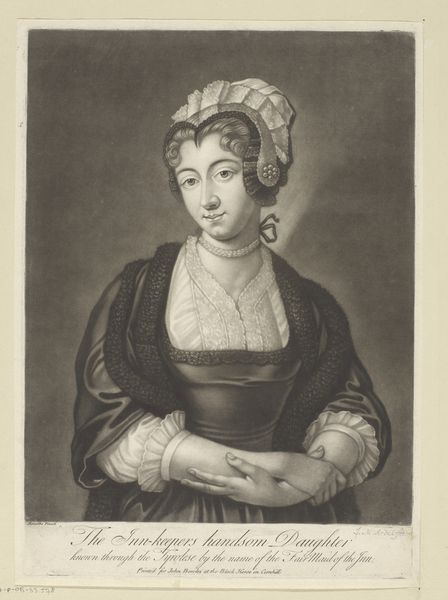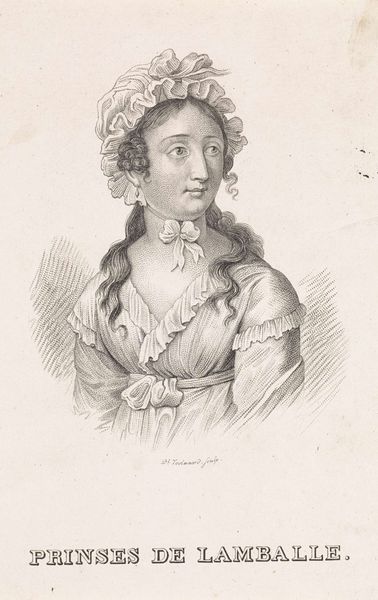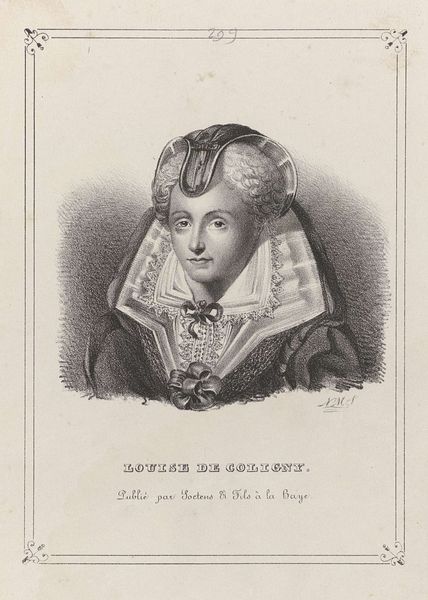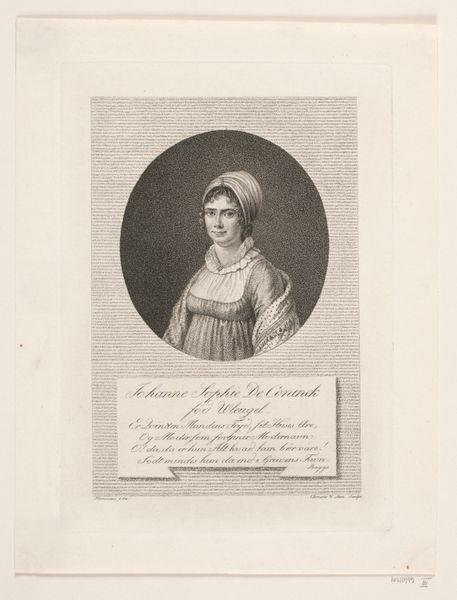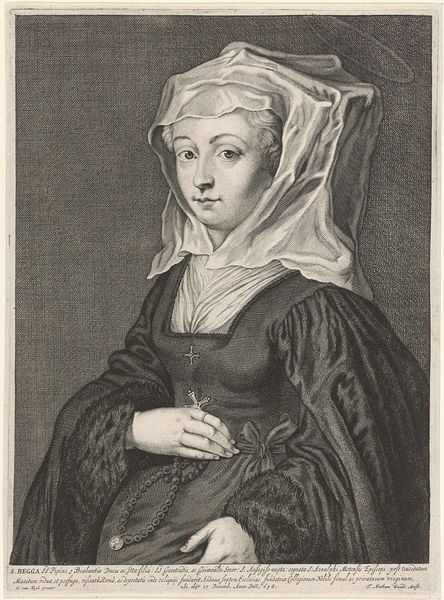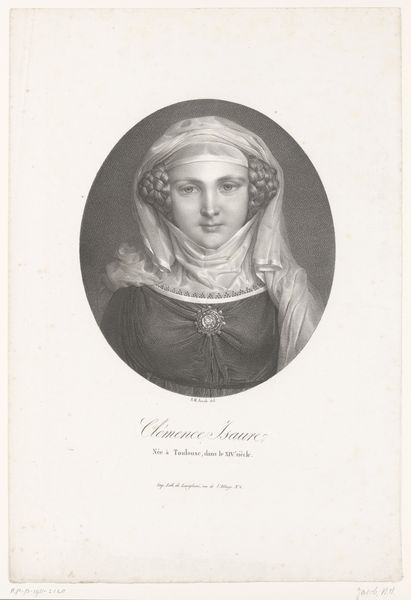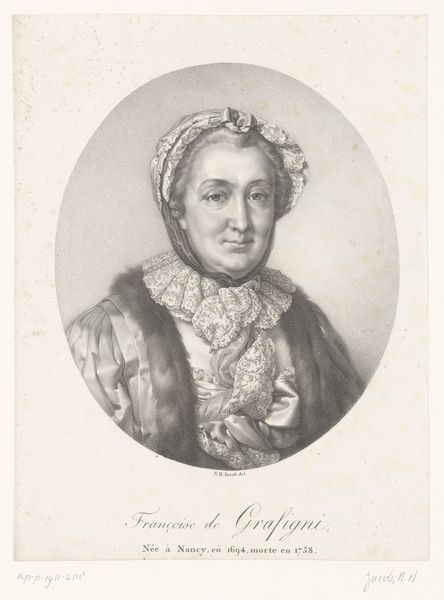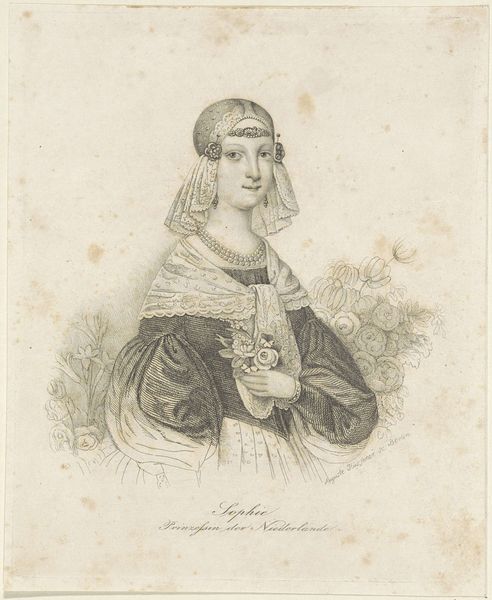
print, engraving
#
portrait
# print
#
old engraving style
#
history-painting
#
engraving
#
realism
Dimensions: height 192 mm, width 134 mm
Copyright: Rijks Museum: Open Domain
Editor: Here we have a print from the mid-19th century, around 1834 to 1840, titled "Portret van Anna van Saksen," by Le R. It’s an engraving, with an "old engraving style." What stands out to me is the direct gaze of the subject – she seems to be asserting herself, but within the confines of that period’s rigid societal expectations for women. How do you interpret this work within its historical context? Curator: That's a very astute observation. Considering the time, it is crucial to unpack what her "direct gaze" might have meant. Anna of Saxony was not merely a passive figure; she was trapped in a politically arranged marriage with William of Orange and faced enormous pressures. Did her gaze signify defiance against those very expectations and restrictions imposed upon her? Think about how portraiture functioned then – it wasn’t just about capturing likeness, it was about projecting power, status, and very carefully constructed identity, particularly for women of nobility. Editor: So, it's almost like reading between the lines – considering the social constraints and the limitations she would've experienced? Curator: Precisely. An activist lens calls on us to acknowledge the power structures at play. Anna's story is a potent reminder of the limited agency women had. Consider also that this image was produced decades after her death. What purposes might it have served to evoke her image in 19th century Europe? Was it an attempt to reframe her narrative? Was it connected to contemporary debates about female autonomy? It encourages us to examine who controls historical narratives and for what ends. Editor: That’s a very different perspective than what I initially considered. Thank you. It really highlights the importance of thinking critically about representation, gender, and power when we examine historical artworks. Curator: Exactly. By asking these questions, we challenge conventional interpretations and create space for more nuanced understandings. We can use this insight to challenge inequities in art representations, both past and present.
Comments
No comments
Be the first to comment and join the conversation on the ultimate creative platform.
